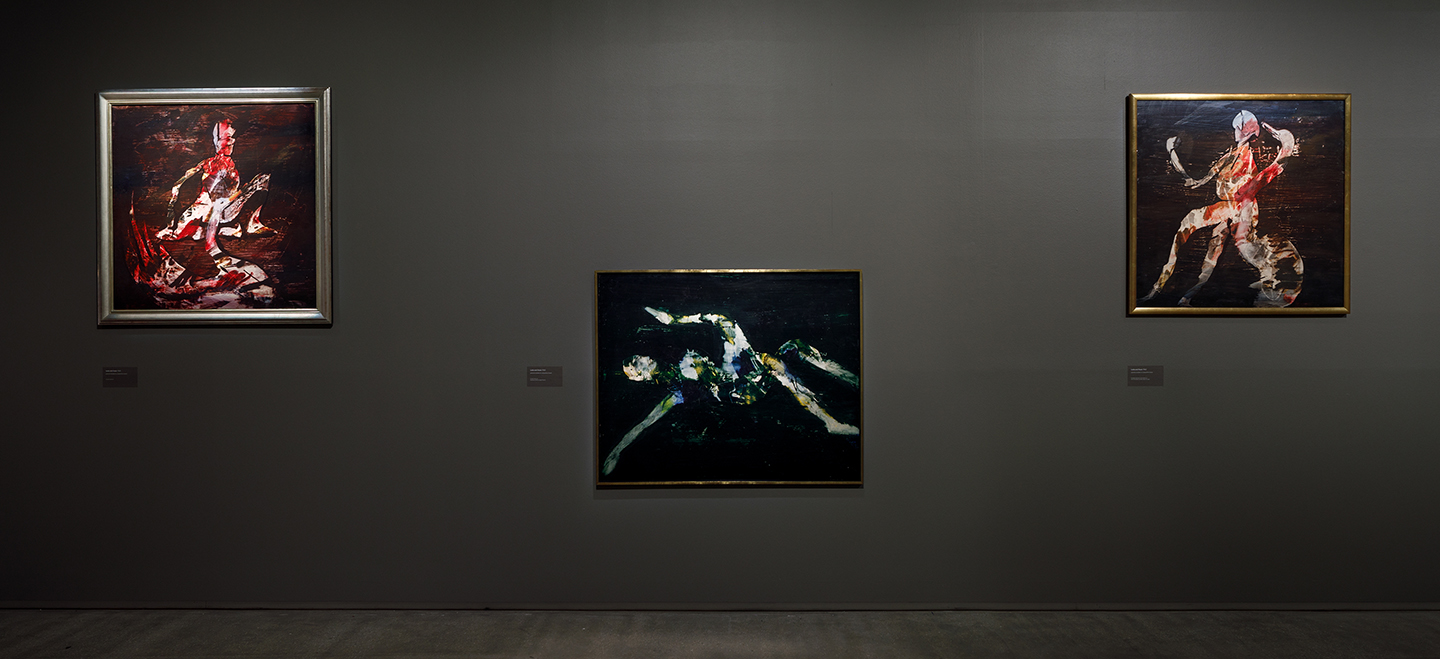The Nolan exhibition that put Australian art ‘on the map’ is now reunited at TarraWarra

By Nancy Langham-Hooper
In 1960, Sidney Nolan was a well-respected Australian artist living in London. But with his exhibition that June, entitled Leda and the Swan and Other Recent Work, he became an absolute sensation.
The exhibition, which took place at London’s Matthiesen Gallery, attracted 400–500 visitors a day, and most paintings sold out within a few days. It was a huge critical and commercial success, and a strong break with his previous themes. Melbourne art critic Alan McCulloch would later point to this exhibition as the event that put Australian art ‘on the map’.
This current exhibition at the TarraWarra Museum of Art is the first time since 1960 that Nolan’s Leda and Swan series has come together again. Based on the story from Greek mythology, Leda, the queen of Sparta is raped by the god Zeus, in the form of a swan. One of Zeus’s resulting children, Helen, would later become the catalyst for the Trojan war.
Art history is full of interpretations of Leda and the Swan, but very few depict it as violent or non-consensual. Especially for Renaissance painters, it was an excuse to paint a female nude, with a graceful swan delicately covering the naughty bits.
Yet Nolan approaches it completely differently. Each painting of his Leda and Swan series is different, but none are sensual or sexual. Sometimes Zeus attacks from the front, sometimes from the back or side. Leda is often depicted without arms, helpless against the swan’s invasion.
The figures themselves seem detached from reality. They are mere splotches of colour floating in a dark, eerie void. Nolan used a new technique to achieve this. He would create a colourful background, then paint over it in a darkly pigmented, watery PVA glue. He worked quickly, one section at a time, scraping back the glue to reveal the colours and create the figures. This gives the paintings incredible texture and life, which can only really be appreciated in person. Robert Melville described the series as separate frames in a film: “[T]he artist seems to have visualized a kind of film ballet in the dark, with the woman and the swan picked out in coloured lights. Each variation has the look of being a single ‘frame’ from a long action sequence.”
Some were a bit shocked at this new theme. Was this really Sidney Nolan, famous painter of the Ned Kelly series? Where were the bold colours and broad vistas of the Australian outback? Where was the sense of misplaced nostalgia? Why had Nolan suddenly become fascinated with an ancient Greek myth?
Nolan had always been fascinated by Greek myths, and other mythologies as well. But in this series, he insists he hasn’t abandoned his exploration of Australian nationalism. “The Leda and the Swan series was not merely an interpretation of an ancient myth,” he declared. “It was, in fact, a dry-run for my Gallipoli series.” Indeed, alongside his many Leda paintings are subjects of Anzac soldiers done in the same PVA medium. In fact, the painting that lends its title to the current exhibition, The Myth Rider, 1958–59, depicts an armless Anzac solider riding an ancient Greek horse, pulled inevitably towards war. On the opposite wall is The Myth Rider’s companion, Leda and Swan, 1958. Done in the same colours and with some overlap of composition, this Leda is just as powerless as the solider. Without arms, she floats helplessly as Zeus’s violence overtakes her.
And it’s that ancient Greek idea that violence was unavoidable and cyclical that Nolan wished to explore in both his Leda and Swan and Gallipoli series. Is humanity really helpless in the face of war and violence? Is violence something we participate in, like a solider, or is it something that’s done to us, like Leda?
It’s hard to say what Nolan’s opinion was—his work, like the very best 20th century art, asks more questions than it answers. But the paintings remain powerful because these questions are still relevant. As viewers stand in front of the Leda and Swan series again in the 21st century, it might not be the Trojan War or the Cold War that they think of. Perhaps now we’d think of Afghanistan, Ukraine or our own Australian history of violence towards Aboriginal and Torres Strait Islander people.
Nolan believed that myth, whether it’s the legendary status of Ned Kelly or the epic tale of the Trojan War, can help us understand who we are today, if we are willing to ask some uncomfortable questions.
This article is by guest contributor Nancy Langham-Hooper (The Art Doctor)
Header image: Sidney Nolan: Myth Rider, installation view, TarraWarra Museum of Art, 2021 © The Trustees of the Sidney Nolan Trust / Bridgeman Images. Copyright is now managed by the Copyright Agency. Photo by Andrew Curtis.